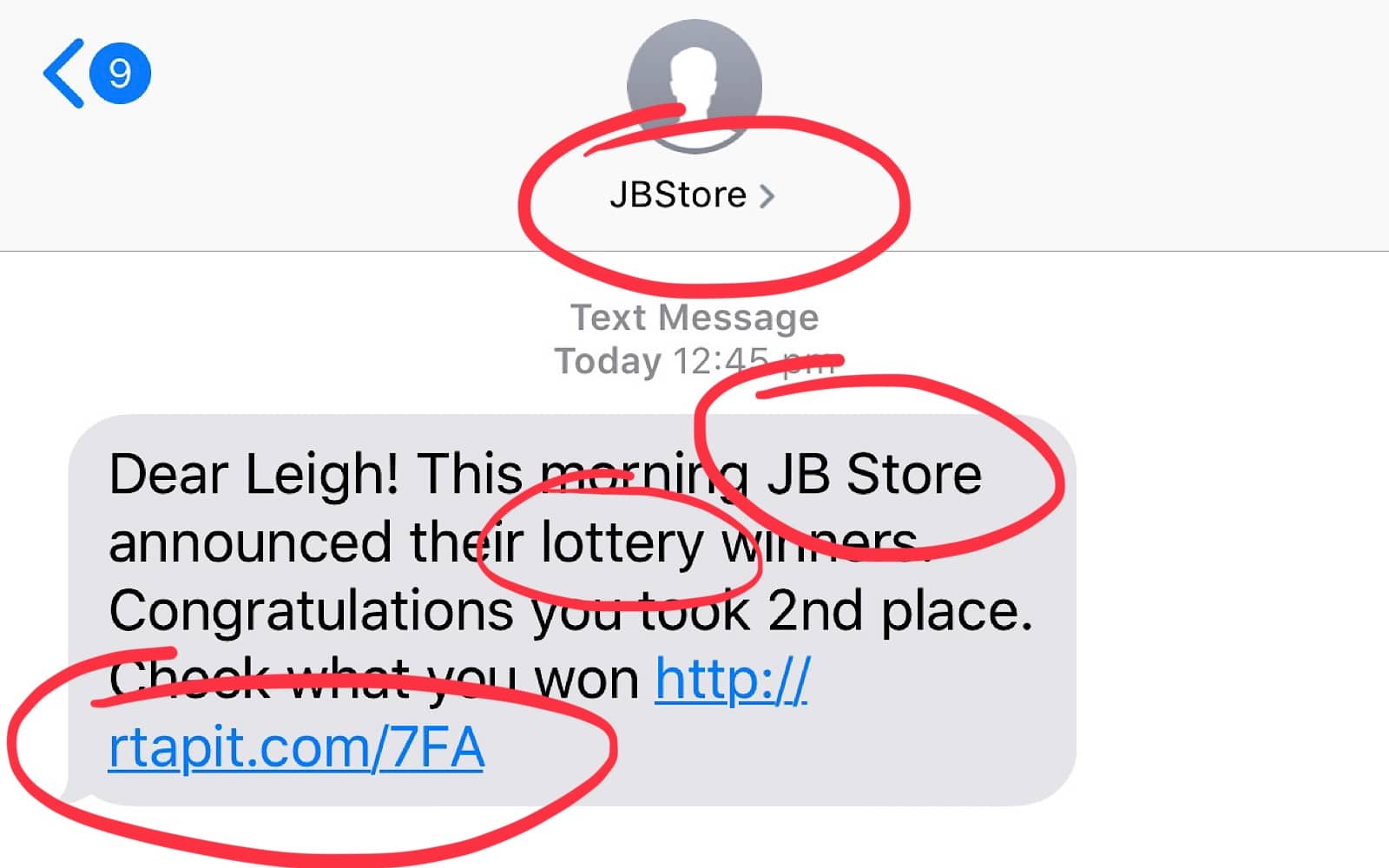There’s no shortage of scams out in the world, so keeping on top of them is important. What can you do to stay one step ahead?
It seems there are new scams every week, but more often than not, it’s the same style on a different day. A scammer pretending to be from a major retailer or calling from the NBN or a quick call from the tax office and so on and so on and so on.
There are so many scams, and not enough time to adapt to all of them. It’s all too easy to get lost in the flurry of scams out there.
So how do you stay on top, and what are the key lessons and learnings you can use each and every day to not get fooled?
Tips to keep ahead of scammers
If you’re like us, you’ll get one every day — at least one — and chances are, it will be something someone has seen before.
- An investor or superannuation scam.
- A survey scam with a supposed prize.
- A scammer “talking” to you over a chat, when it’s really just a chatbot scam
- A scam attempting to extort money by suggesting they have pictures of you in a lewd act.
- A random invite from the Google Drive of someone you’ve never met that’s more spam than scam.
With Australians losing around $20 million last month alone, there’s a good chance you’re going to get sent a scam at one point, and a possibility you might fall for it. And if not, it’s a further possibility that someone you know will ask you about it.
Scams are now a regular conversation point between people, but there are some lessons to be aware of to help you stay aware of them, and prevent yourself from being a victim.
Be cautious about texts and emails from people you don’t know
Much like how “stranger danger” is a thing we teach kids when they’re young, it’s wise to be cautious about emails and text messages sent to you not just from an unfamiliar number, but purporting to be from a business you do know.
If the business includes a link in a text or email, read the message carefully, and ask yourself whether you really need to click.
And if the message is threatening or suggesting of a fine, Google the organisation’s phone number online and call the official phone number to find out whether the message would be legit. It’s rare to find a government or business suggesting fault over a text message, or even through an automated robotic phone call, if it gets to that.
However scammers play on this automatic instant feeling of fear, and expect you to touch or click a link without thinking, because the real scam lies underneath.
Inside these links, scammers tend to bait with a “phishing site”, which is to say it’s a website that looks legit, yet is anything but. The problem with phishing sites is that it’s all too easy to create a familiar looking website, even if it doesn’t connect to the real deal.
So here’s what you can do: approach links and messages with trepidation, and don’t click a link simply because it has been sent to you.
“Make it a rule to treat all links, texts and emails with suspicion,” said Alex Merton-McCann, Cyber Safety Ambassador for McAfee in Australia and New Zealand.
“Scammers rely on consumers being too busy, lazy or confident to double check for spelling errors and illegitimate URLs or to check directly with the source whether the correspondence is genuine,” she said.
“By simply navigating the web with a level of caution, consumers will be in a much better position to stay on top of scams even as they evolve.”
Read through messages carefully
If you have found yourself reading something you think is a scam, read through the message carefully.
Scammers are getting better at spelling and grammar, but there are things they’ll always miss, not because they don’t know how to spell, but because the rules of the web mean they can’t fake them.
It means a scammer purporting to be from PayPal can never use an official PayPal email address — because they’re pretending to be from PayPal — and the same goes with any other company.
That logic also means they can’t just host a website on that company’s website, so the website address, the URL, will go to some random website name or one that looks remarkably similar, but isn’t the same. For this tip, you can simply hover over the website link to see what the preview looks like, with that being your dead giveaway.
Check the email address first, though, and not just the name: anyone can fake the name coming from a location, but the actual send address is found at the top of the email when you click to reveal what it is. Click on that and find out if a scammer sent you an email quickly.
Texts are a little more difficult to gauge that way, particularly given the fact that scammers can use similar company names when they send a text thanks to the online SMS sending services. However if any SMS uses a threat or suggests you’ve won a prize, or even that there’s a package waiting for you, consider calling up the official company by searching for their phone number online. All three of these are standard approaches for scammers in 2021, and we’ll likely keep seeing them used because they work.

Check Scamwatch for trending scams
We’re not the only ones reporting on scams, and Australians actually have a part of their government looking out for them.
Locally, the Australian Competition & Consumer Commission (ACCC) runs Scamwatch, a scam tracking and reporting website, so naturally, one of the tips is to check this site if you’re concerned about something you might be seeing.
“Check out Scamwatch’s website, social pages, and email newsletters where timely updates on new and trending scams are shared to keep consumers on top of the latest threats,” said Merton-McCann.








